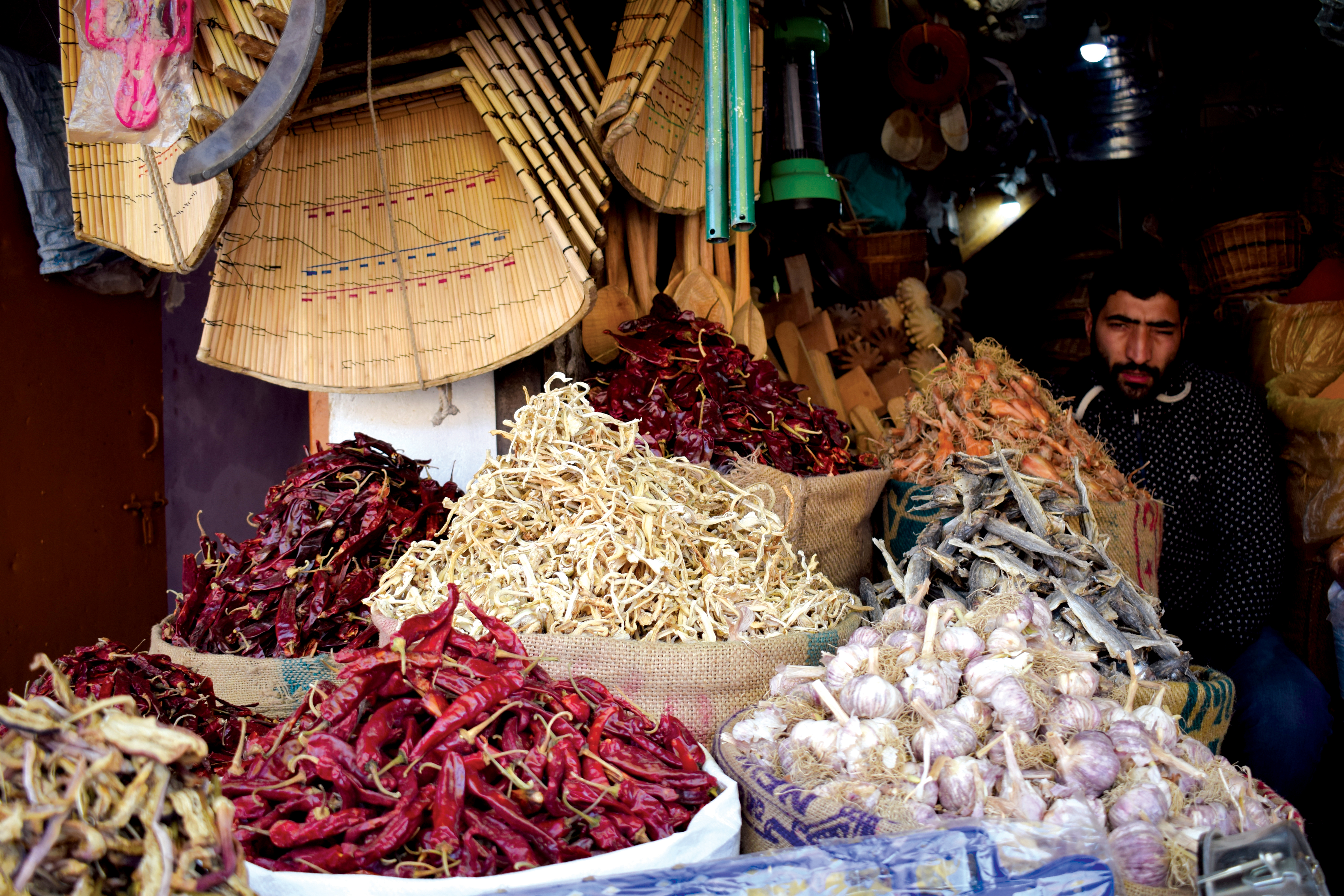
Exploring Srinagar with 49-year-old Bashir Ahmed is the best way to soak up Kashmir’s culture and understand its cuisine. Most households don’t have a lot of furniture and eating on the floor is a tradition. Handcrafted copper utensils grace most kitchens—a wee bit expensive but then Kashmir is the land of beautiful people who cultivate fragrant spices under the strong influence of self-indulgent Persians and Mughal rulers.
Walking on the streets, the tandoor is ubiquitous, found at every corner. Breakfast is normally round bread, straight out of the tandoor, and noon (salted) chai, says Ahmed. Also known as gulabi chai and sheer chai, noon chai is more popular than the better-known kahwa. To gunpowder tea are added salt and baking soda, which make the tea pink in colour. The round crisp baqerkhani bread, much like a north Indian naan, is topped with sesame seeds. There are two varieties, priced at Rs 5 and Rs 10 respectively. The cheaper variety is slightly harder. Add some butter and dip it in the chai for a delicious breakfast.
Then there are small bun-like round breads for tea — ◙tsot and tsochvoru — topped with poppy and sesame seeds. Adding some butter makes them easy to bite into. While breads are more used as snacks, the main meals have rice. The other common breads here are sheermal (slightly sweet), lavas, kulcha and girdas.
Sheermal goes well with kahwa — green tea mixed with saffron, almonds and spices. There are 20 different kinds of kahwa across Kashmir. At weddings, milk is sometimes added to this beverage. Generally, this is sweetened with honey, but gulkand is also a good sweetener. Kahwa is made and served in a copper utensil called samovar, a handcrafted teapot that costs a bomb. A shop, Naqshdaar, in the old city, sells the big ones for over Rs 1 lakh.
While you can enjoy the popular dishes in fine-dining spaces, some delights are only found on the streets. A masala tikki is sold along with dried vegetables and fish.
Butcher shops are aplenty and most wares such as bones and ribs are proudly displayed. This does seem a little gruesome, but then the Valley is largely meat eating.
An interesting dish is Kruhun Masale: boiled chana rolled in a thin white flour roti and dipped in tomato chutney, served on a torn newspaper. Another newspaper delight is Masale Tzhot. For a Delhiite, this is best remembered as dal moth, only the masalas make it dark in colour. The street food does not lack in fragrant spices. But then the Valley is known for its cultivation of saffron (grown in Pampore), shahi zeera, Koshur Marchwagan or Kashmiri lal mirch and Zereshk or mild, tangy berries. There’s ample use of dried ginger or sonth and baedyn or dry roasted and ground fennel seeds in the dishes.
Coming to the main course, Wazwan is perhaps the most well-known multi-course meal. But this is traditionally cooked by special cooks known as Wazas on important occasions such as weddings. It is a hereditary profession and generally not taught outside the bloodline. Most dishes are meat-based (chicken, lamb). Fish is not found in this meal but can be enjoyed otherwise in daily meals. Traditionally, there are 36 dishes, but times do change the number.
As for Wazwan, its consumption is a ritual. A tash-t-nari (jug and basin) is passed around for the guests to wash their hands. The centrepiece of the meal is a large dish filled with rice. This is laden with four seekh kababs, four pieces of meth maaz, two tabak maaz, sides of barbecued ribs, one safed kokur, and one zafrani kokur.
Alongside are placed other dishes. The accompaniments are yogurt garnished with saffron, salads, pickles and dips.
For those who like a light vegetarian meal, Nadru Yakhni (lotus stem cooked in flavoursome yogurt curry) is a good option. The Kashmiri Pulao with nuts is another unmissable dish. The list is long, but with good
weather and fragrant spices, who can deny this tasteful
indulgence?
Rival leagues trigger players’ suspensions and a legal battle in Indian golf, for now
Former Delhi CM Kejriwal criticises Centre, Delhi govt over worsening air pollution, alleges AQI manipulation
Delhi Police raids Nangloi unit producing fake engine oil, seizes over Rs 1 crore worth…
Mukesh Sharma reimagines digital components as living matter in his solo exhibition ‘Decoding Digital DNA’
Nine accused were arrested in coordinated raids as police uncovered organised networks supplying mule bank…
Nearly 1.57 lakh PUC challans issued in two months as Delhi steps up GRAP enforcement…